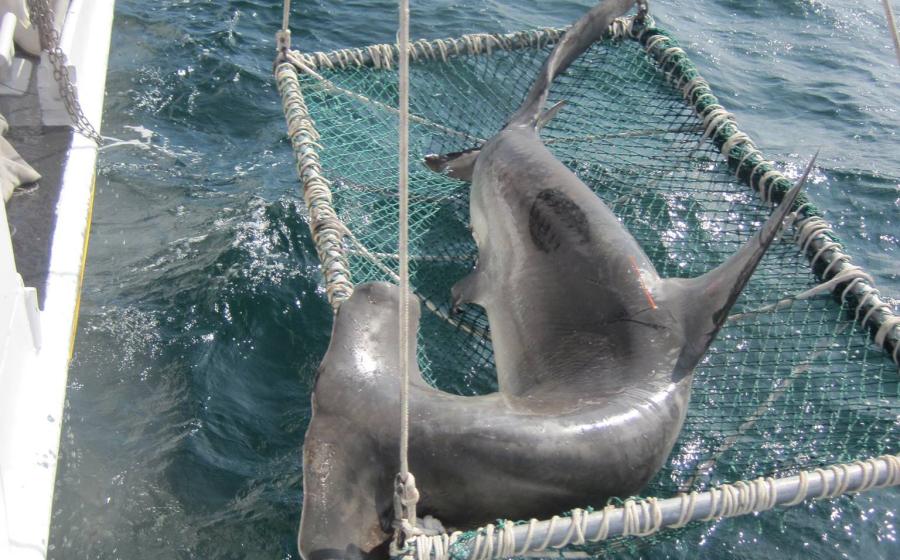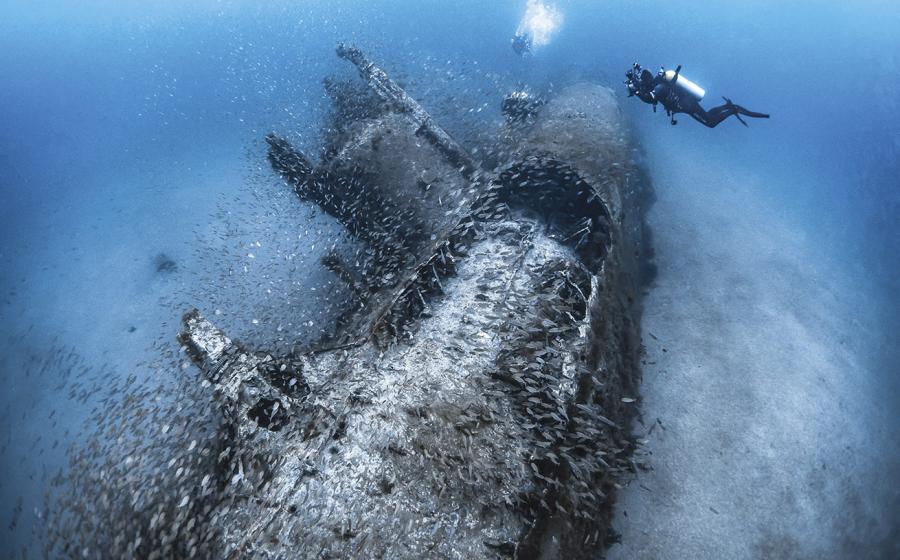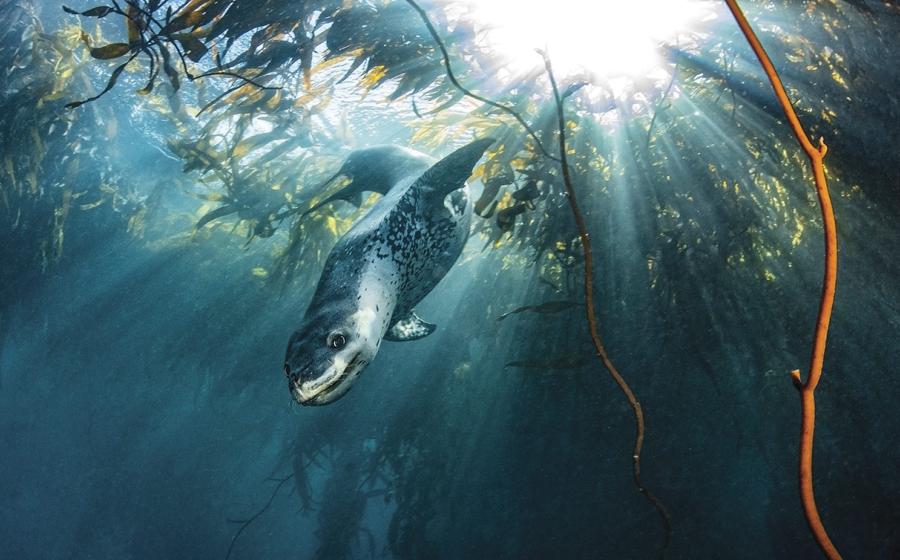First Steps After a Lionfish Sting

Lionfish Safety: What To Do If Stung
Sponsored by: Divers Alert Network (DAN)
Lionfish are typically nocturnal and docile creatures. They allow curious divers to approach closely, enhancing their risk for injury from accidental contact or handling of marine life. These ornate, elite predators are an invasive species that have become a common sight for many divers as they spread down the North Atlantic, and into the Caribbean and northern part of South America’s Atlantic shore.
Injecting a Dangerous Venom
Lionfish use venom as a protective mechanism. When divers come in direct contact with their spines or fins, venom is injected into the skin through needlelike bristles located along the dorsal, pelvic and anal fins. Envenomations are rare and often not life-threatening, but benefit from rapid first aid response and professional medical evaluations.
These puncture wounds can cause pain which may last for several hours. They also may result in rapid edema (swelling caused by fluid retention) and subcutaneous bleeding. Swelling typically clears in two-to-three days, while the tissue discolorations can last up to five days. In some cases, swelling can become so severe that blood flow is compromised leading to ischemia (inadequate blood flow to a part or organ) and tissue necrosis (tissue death). This is particularly true for fingertips, where swelling could significantly compromise the flow of blood. A secondary complication may result in the wounds becoming infected.

Photo Courtsey of Shutterstock
First Aid Essentials
First aid is essential in preventing infections; clean the wound, control the pain and apply topical antibiotics using these easy-to-follow steps:
- Wash the area thoroughly with soap and fresh water.
- Remove any foreign material.
- Control bleeding, if necessary.
- Control the pain: Immerse the affected area in the hottest water tolerable without causing injury (the upper limit is 113°F / 45°C) for 30 to 90 minutes. Repeat as needed. Test the water on the same area as the injury to ensure it is not too hot; intense pain may impair one’s ability to discriminate between hot and scalding.
- Ice/cold packs can also be used to provide relief and reduce swelling
- Apply topical antibiotic ointment or cream.
- Apply bandaging as needed.
- If necessary, administer pain-control medications.
- Seek a professional medical evaluation as medical management may include sedatives, tetanus vaccination and antibiotics. Advanced life support may be required in rare instances.
- In the event of an emergency, call 911 (or the local equivalent) and the DAN Emergency Hotline at +1-919-684-9111.
Learn More
Take DAN’s First Aid for Hazardous Marine Life Injuries course. This first aid course teaches divers how to identify and effectively manage injuries resulting from lionfish encounters and other marine life.
Test your knowledge of hazardous marine life at DAN.org/quiz.
Sign up for a DAN Membership and/or Enroll in DAN’s Dive Accident Insurance today.
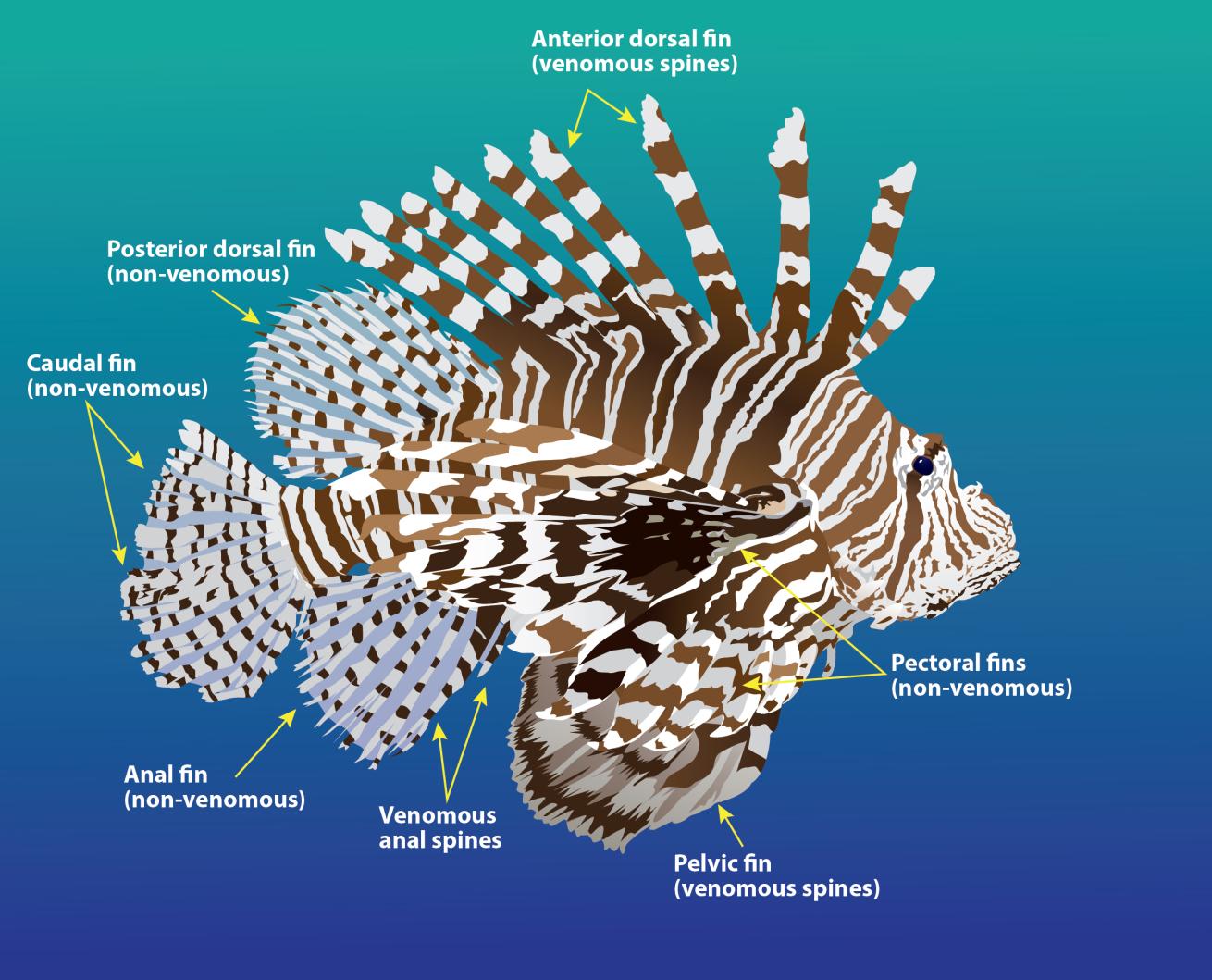
Scuba DivingLionfish
Sponsored by: Divers Alert Network (DAN)
Lionfish are typically nocturnal and docile creatures. They allow curious divers to approach closely, enhancing their risk for injury from accidental contact or handling of marine life. These ornate, elite predators are an invasive species that have become a common sight for many divers as they spread down the North Atlantic, and into the Caribbean and northern part of South America’s Atlantic shore.
Injecting a Dangerous Venom
Lionfish use venom as a protective mechanism. When divers come in direct contact with their spines or fins, venom is injected into the skin through needlelike bristles located along the dorsal, pelvic and anal fins. Envenomations are rare and often not life-threatening, but benefit from rapid first aid response and professional medical evaluations.
These puncture wounds can cause pain which may last for several hours. They also may result in rapid edema (swelling caused by fluid retention) and subcutaneous bleeding. Swelling typically clears in two-to-three days, while the tissue discolorations can last up to five days. In some cases, swelling can become so severe that blood flow is compromised leading to ischemia (inadequate blood flow to a part or organ) and tissue necrosis (tissue death). This is particularly true for fingertips, where swelling could significantly compromise the flow of blood. A secondary complication may result in the wounds becoming infected.
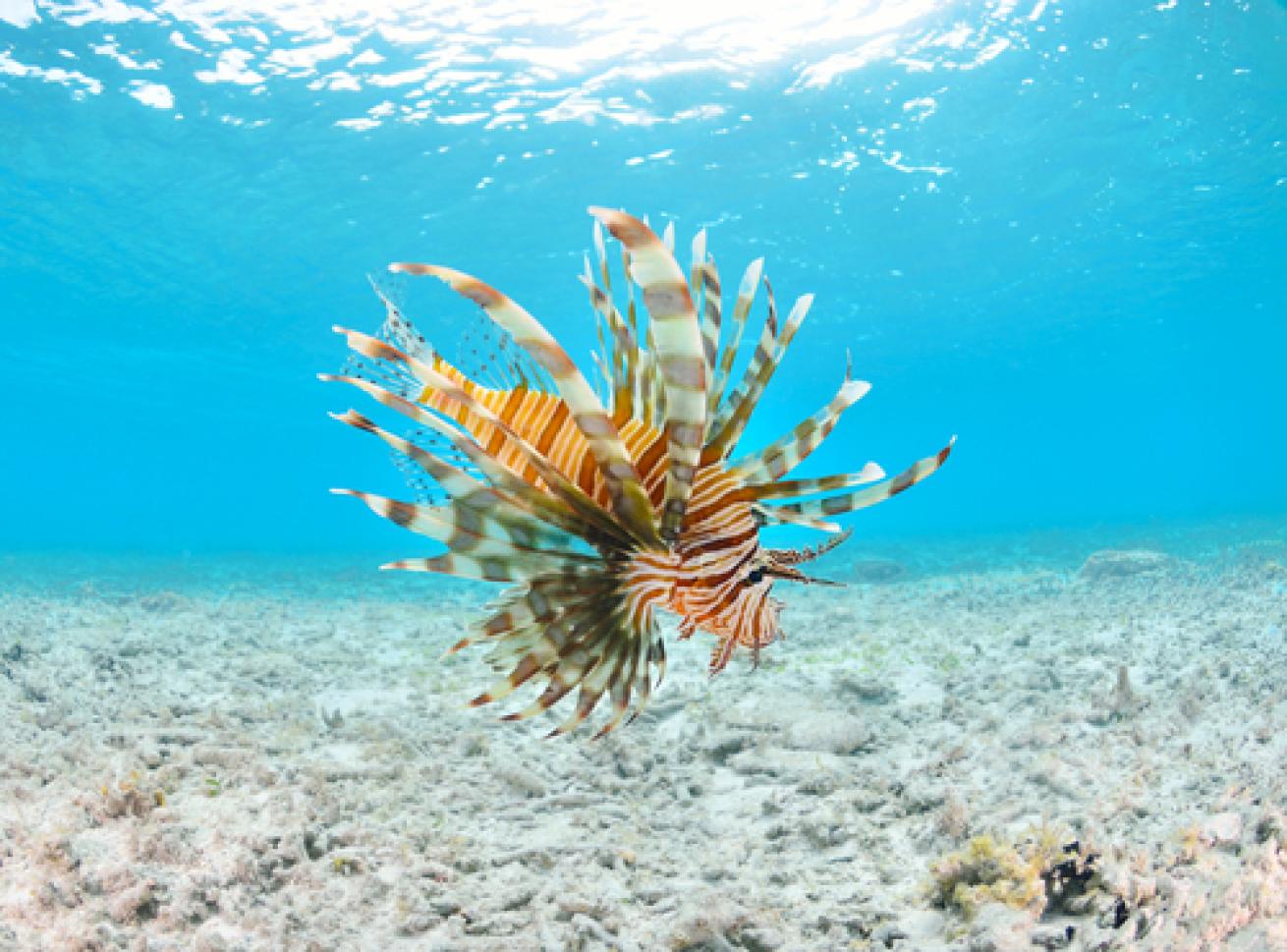
Scuba DivingLionfish
First Aid Essentials after a Lionfish Sting
First aid is essential in preventing infections; clean the wound, control the pain and apply topical antibiotics using these easy-to-follow steps:
- Wash the area thoroughly with soap and fresh water.
- Remove any foreign material.
- Control bleeding, if necessary.
- Control the pain: Immerse the affected area in the hottest water tolerable without causing injury (the upper limit is 113°F / 45°C) for 30 to 90 minutes. Repeat as needed. Test the water on the same area as the injury to ensure it is not too hot; intense pain may impair one’s ability to discriminate between hot and scalding.
- Ice/cold packs can also be used to provide relief and reduce swelling
- Apply topical antibiotic ointment or cream.
- Apply bandaging as needed.
- If necessary, administer pain-control medications.
- Seek a professional medical evaluation as medical management may include sedatives, tetanus vaccination and antibiotics. Advanced life support may be required in rare instances.
- In the event of an emergency, call 911 (or the local equivalent) and the DAN Emergency Hotline at +1-919-684-9111.

DANDAN
Learn More
Take DAN’s First Aid for Hazardous Marine Life Injuries course. This first aid course teaches divers how to identify and effectively manage injuries resulting from lionfish encounters and other marine life.
Test your knowledge of hazardous marine life at DAN.org/quiz.
Sign up for a DAN Membership and/or Enroll in DAN’s Dive Accident Insurance today.







